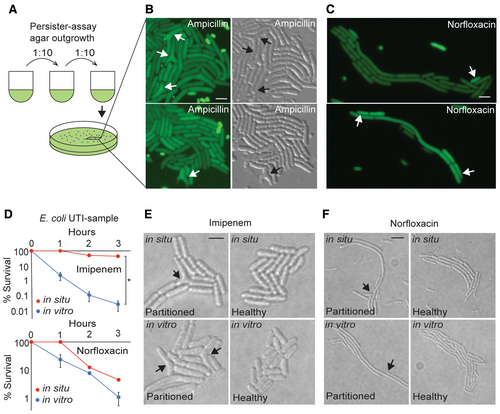Bacteria can survive antibiotic treatment by forming dormant, drug-tolerant persister cells. They can resuscitate from dormancy after these treatments and in case of prolonged infections. As the lethality of most antibiotics requires cellular growth, dormancy may provide a broad-spectrum tolerance strategy by blocking drug uptake, preventing target binding, or by reducing the lethal downstream consequences of antibiotics. Authors in this study, developed approaches to track resuscitation directly and then mathematically model the resulting dynamics. This “bottom-up” approach to resuscitation was agnostic to the underlying molecular mechanisms. Tracking and modelling single-cell resuscitation dynamics of bacterial persisters showed that this is a drug-dependent and non-stochastic process. They further observed that, persisters can partition cellular damage into healthy and non-viable daughter cells after antibiotic treatment. This study discusses novel properties of resuscitation and indicates that persister partitioning may be a survival strategy in bacteria that lack genetic resistance.
Link to the article: bit.ly/3NRrzv1
Published On: /05/2023
